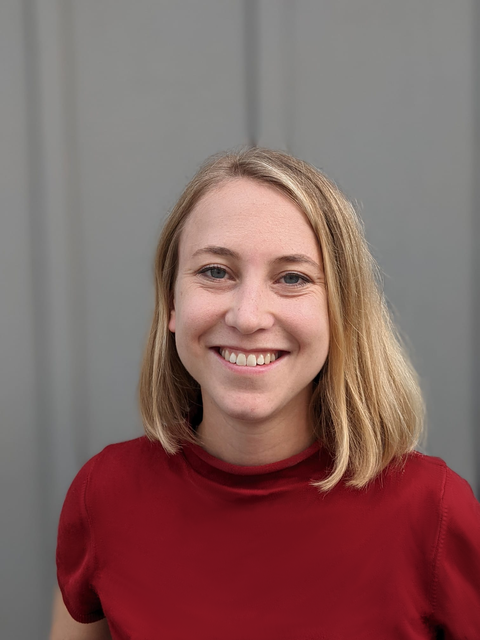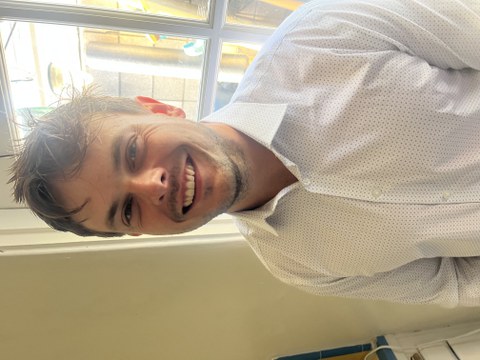Dec 04, 2024
Cell-specific bioconjugation through enzymatic activation of caged tetrazines & Investigating oxidized lipid biology with hydroxylamine-based fluorescent probes
Abstract:
Caroline Knittel
Abstract:
Bioorthogonal reactions have transformed molecular biology by enabling the conjugation of diverse biomolecules—such as lipids, proteins, and nucleic acids—within cellular environments. Tetrazines are highly reactive and biocompatible probes that undergo cycloaddition reactions with dienophiles. However, highly reactive tetrazines often demonstrate limited hydrolytic stability and reduced spatial precision, creating significant challenges in complex biological systems where multiple cell types coexist. Here we describe Tetrazine Release and Activation by Cellular Enzymes (TRACE), a method that enables cell-specific click-to-release and ligation reactions. By leveraging differences in enzyme activity profiles across different cell types and compartments, TRACE facilitates spatially controlled tetrazine release by deprotection through endogenous enzymes. We demonstrate the utility of this method for the targeted release of a cytotoxic drug, selectively impacting the viability of enzyme-expressing cells in both cell monocultures as well as co-culture systems. Then, we further optimize the electronic properties of the dihydrotetrazine scaffold achieving rapid uncaging and activation of highly reactive tetrazines within less than five minutes. We further show that caged tetrazines can be anchored to cell membranes containing metabolically labeled phospholipids and subsequently uncaged in cellular compartments with elevated enzyme activity. This enables organelle-specific imaging of enzyme activity using confocal microscopy through reaction with dienophile-functionalized fluorescent dyes.
Bio:
Dr. Caroline Knittel earned her Ph.D. in Chemistry from TU Berlin under the mentorship of Prof. Roderich Süßmuth. Her dissertation focused on the total synthesis of the death cap toxin α- amanitin, for which she received the Max-Bergmann Young Scientist Award. Then, Caroline joined Prof. Neal K. Devaraj's research group at the University of California San Diego, as a recipient of the Walter Benjamin Fellowship from the DFG. Since then, she has been expanding her research interests to bioorthogonal ligation methods, with a particular interest in metabolic labeling and live-cell imaging of phospholipids.
Jacob Vance
Abstract:
Polyunsaturated phospholipids are highly susceptible to oxidation due to their multiple double bonds, which are easily attacked by reactive oxygen species such as superoxide and hydroxyl radicals. This oxidation generates electrophilic lipid species, including aldehydes, that form covalent adducts with cellular nucleophiles like proteins and DNA. These interactions contribute to cellular damage and are implicated in several pathological processes. We developed a hydroxylamine-based fluorescent probe to label aldehyde-containing oxidized lipids, enabling direct visualization of their distribution within cells by confocal microscopy. Manipulating the expression of enzymes involved in oxidized lipid metabolism significantly altered the accumulation of these oxidized lipids. Confocal microscopy revealed distinct staining patterns between genetically modified, control, and different cell types, indicating that genetic factors influence lipid accumulation and dynamics. The probe was also detected as an adduct with several aldehyde- containing phospholipids using tandem high-resolution mass spectrometry. These findings provide insights into the cellular distribution of phospholipid aldehydes, emphasizing how genetic alterations can impact lipid distribution and potentially guide the development of targeted strategies to mitigate oxidative damage and manage related diseases.
Bio:
Jacob Vance earned his bachelor's degree in Biochemistry from Brigham Young University, where he studied Trypanosoma brucei metabolism and developed assays for metabolite dynamics using genetically-encoded fluorescent biosensors. Jacob is now a PhD candidate in Prof. Neal Devaraj's lab at the University of California San Diego, focusing on lipid metabolism. He employs bioorthogonal labeling, confocal imaging, and mass spectrometry to investigate the products of lipid peroxidation.


